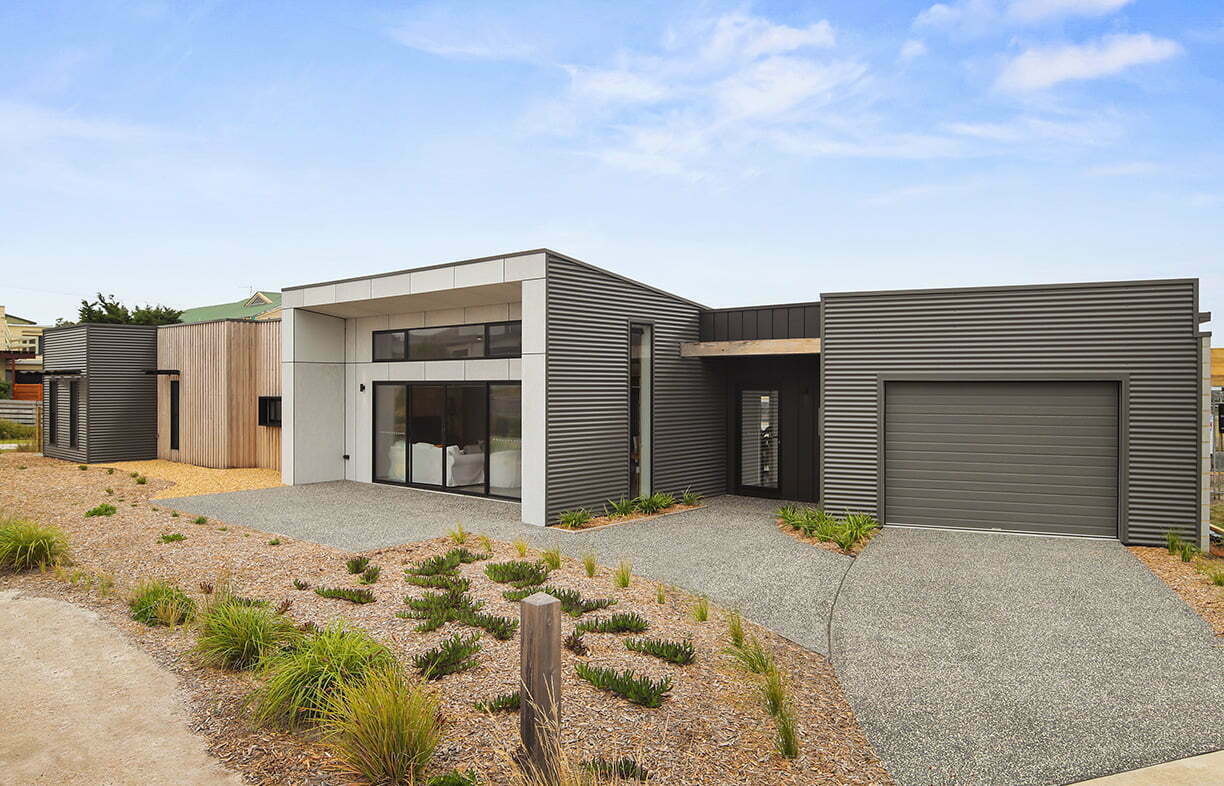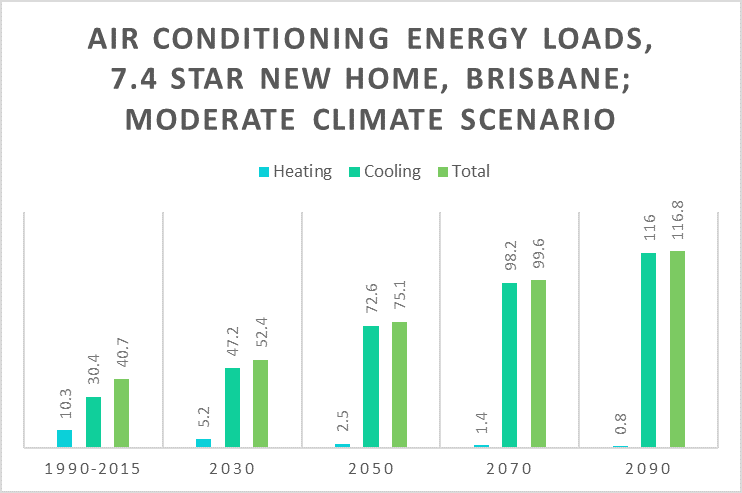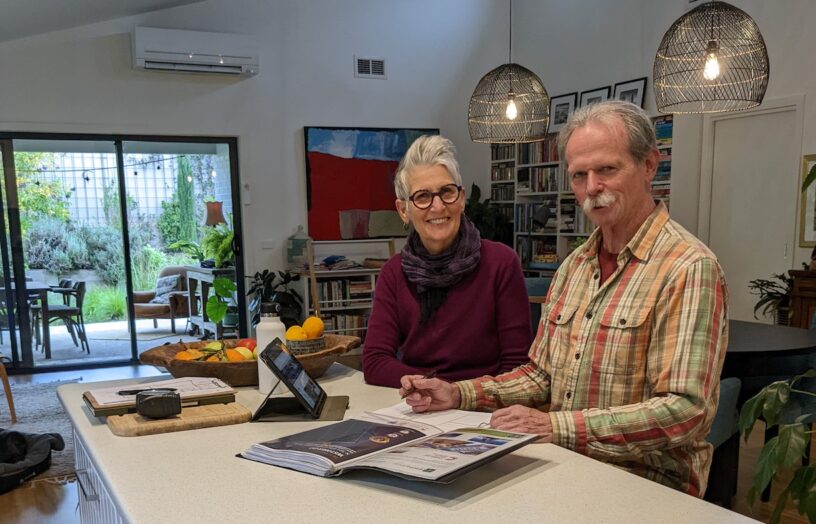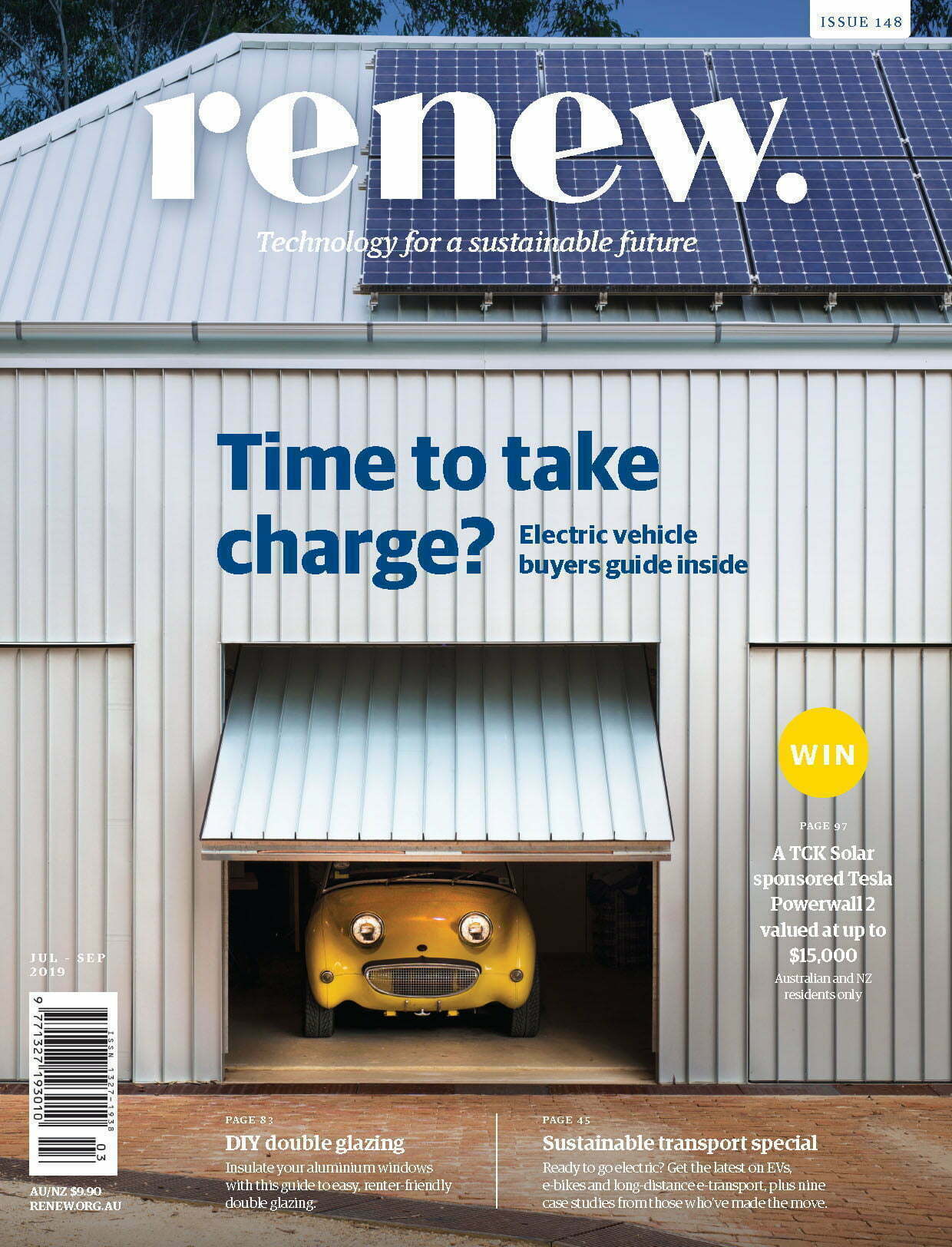A winning formula: high-performance house plus EV

Despite the upfront cost premium, opting for a highly efficient, all-electric home with an EV can offer significant economic and environmental benefits. We analyse one example.
Near Cape Paterson on Victoria’s south-east coast, Joe and Jo Spano live at an eco-development known as The Cape. They recently built a highly efficient, all-electric home with 6 kW of solar PV and 4.8 kWh of energy storage. And they are about to take possession of one of the next generation of long-range electric vehicles.
To understand the economic and environmental value of the Spanos’ home and car choices, the energy analysts at Renew compared them with two alternative scenarios: an average existing (2 Star) or minimum-standard (6 Star) new build, “dual-fuel” Victorian home, along with the purchase of a comparable internal combustion engine (ICE) vehicle.
For this analysis, we asked the following questions:
- What if the Spanos had built a typical 6 Star, dual-fuel Victorian home and bought an ICE vehicle?
- How does the Spanos’ all-electric solar home compare to a typical existing, 2 Star Victorian dual-fuel home?
- What are the costs, savings and environmental benefits of each approach?
The home
The Spanos’ new home is a three-bedroom, 153 m2 dwelling that has been rated at 8.3 Stars. It uses a combination of direct solar electricity, stored solar electricity and mains grid electricity. The home isn’t connected to the mains gas network and doesn’t use bottled gas or wood for fuel.
The home consumes an average of 2 kWh of electricity from the grid per day—or around 700 kWh per year. This is about 1/20th of the energy grid usage of an average Victorian home, which consumes around 4400 kWh per year along with 40 gigajoules (approx 11,100 kWh) of mains gas (bit.ly/vuchs).
Based on their current retail tariff (including 100% GreenPower and the current Victorian feed-in tariff for solar), the Cape Paterson home will incur electricity bills of approximately $123 per year (excluding EV charging), with no gas bills.
The car
The Spanos have recently purchased a Hyundai Kona Hylander electric vehicle (EV), a model that is offered in both EV and ICE formats. See Figure 1 for their specifications.
As former residents of Melbourne, the Spanos plan to make twice weekly trips to the city (300 km round trip) to see friends and family. As new residents of the Bass Coast, they are keen to explore the region and estimate travelling approximately 400 km per month.
Aside from that, local trips are likely to incur another 150 km per week of driving. It has been assumed that the couple will take four weeks of holidays per year, where EV driving won’t be required.
Based on this, the Spanos’ total driving distance per year has been estimated at 40,400 km.
| Kona Hylander EV | Kona Hylander ICE | |
|---|---|---|
| Price | $72,000 | $40,000 |
| Range | 449 km | 714 km |
| Storage | 64 kWh | 50 litres |
| Consumption | 16 kWh/100 km | 7.2 litres/100 km |
| Maintenance | $165/year | $279/year |
| Warranty | Car—5 years, unlimited km Battery—8 years, unlimited km | 5 years, unlimited km |
The comparison
We modelled the upfront and running costs of each vehicle, and the stationary (i.e. non-transport) energy usage and bills of all three house scenarios (assuming gas heating, hot water and cooking for the dual-fuel homes).
The energy costs and carbon footprint of the three modelled homes is laid out in Figure 2. (The annual electricity cost of $1522 for the 6 Star dual-fuel home does not include solar PV. Were 6 kW of solar PV installed on this home, it would reduce that home’s electricity bill to -$206 per year.)
Figure 3 shows the running costs and carbon footprint of the two modelled vehicles. The energy price for the EV is for the non-solar (i.e. grid) component of the EV charging, which equates to approximately 75% of the annual energy required for EV charging.
| The Spanos’ home (8.3 Star, all-electric) | 6 Star, dual-fuel home | 2 Star, dual-fuel home | |
|---|---|---|---|
| Cost premium | $13,465 | $0 | $0 |
| Electricity usage per year | 3763 kWh | 2580 kWh | 4380 kWh |
| Gas usage per year | 0 | 22,396 MJ | 40,000 MJ |
| Electricity cost per year (non-transport) | $123 | $1522 | $1497 |
| Gas cost per year | $0 | $908 | $1390 |
| Total energy cost per year | $123 | $2430 | $2887 |
| Annual emissions (tonnes CO2e) | 0 | 4.38 | 7.56 |
| Kona Hylander EV | Kona Hylander ICE | |
|---|---|---|
| Cost premium | $32,000 | $0 |
| Travel distance per year | 40,400 km | 40,400 km |
| Energy/fuel usage per year | 6456 kWh | 2909 litres |
| Energy/fuel unit price | $0.2818/kWh | $1.60/litre |
| Energy/fuel cost per year | $1819 | $4654 |
| Servicing cost per year | $165 | $279 |
| Transport cost per year | $1984 | $4933 |
| Annual emissions (tonnes CO2e) | 0 | 6.83 |
Synthesis
The analysis above results in upfront and running costs and annual emissions for the three different home and vehicle combinations as outlined in Figure 4.
| All-electric home & EV | 6 Star dual-fuel home & ICE vehicle | 2 Star dual-fuel home & ICE vehicle | |
|---|---|---|---|
| Cost premium | $45,465 | $0 | $0 |
| Running costs per year | $2107 | $7363 | $7820 |
| Annual emissions (tonnes CO2e) | 0 | 11.21 | $14.38 |
As compared with the dual-fuel homes, the 8.3 Star solar all-electric home and EV combination offers significant benefits.
The additional cost to the Spanos of their efficient home and EV was just over $45,000 and the running cost is just over $2100 per year. This is a saving of over $5200 per year compared with the new 6 Star dual-fuel home, and over $5700 per year compared with an existing 2 Star dual-fuel home.
Compared with the new 6 Star dual-fuel home and ICE car combination, the additional cost of the Spanos’ home and EV has a simple payback time of 8.65 years, provides an annual investment return of 11.6% and sees the Spanos over $21,000 better off after 15 years, compared to investing the cost premium of $45,000 directly into their household mortgage.
From an environmental perspective, the 8.3 Star, solar all-electric home and EV reduces annual emissions by more than 11 tonnes (compared to its 6 Star and ICE equivalent) and more than 14 tonnes (compared to its 2 Star and ICE equivalent).
Discussion
This case study puts into a broader perspective the current costs and benefits of both all-electric homes and EVs.
While the significant benefits of solar PV are well known, and those of all-electric homes are increasingly understood (see Renew’s latest research into the economics of household fuel choice: bit.ly/EvsG_report), the economic and environmental benefits of EVs, and of all-electric homes with EVs, are poorly understood.
EVs in Australia in 2019 remain expensive in terms of upfront costs, compared with similar ICE vehicles in the market. And while they are on a downward price trajectory, EVs may remain more expensive to purchase than equivalent ICE vehicles for some years to come.
However, when considering the full upfront and ongoing costs and benefits, and in the context of an all-electric home with regard to both stationary and transport energy, all-electric homes and EVs present a very strong economic case when compared with typical Victorian dual-fuel homes and ICE vehicles.
In addition, the environmental benefit (by way of lower greenhouse gas emissions) of solar all-electric homes coupled with EVs is becoming clear. Indeed, EVs on their own are able to be lower emissions than comparable ICE vehicles, even in Victoria which has the highest emissions factor for electricity use in the country. Even without direct charging from on-site solar PV, the emissions intensity of EVs will improve over time as the emissions intensity of the national electricity market continues to reduce.
Understanding the costs and benefits and environmental value of higher efficiency, solar all-electric homes and EVs in this way is relatively new and much more analysis needs to be done to develop a deeper understanding of opportunities and constraints for Australian households.
Further reading
 Advocacy
Advocacy
Future-proofing Australia’s homes
Energy needed to cool homes is set to soar. A new report shows out of date climate data used for energy efficiency ratings will keep us sweating.
Read more



